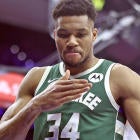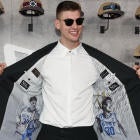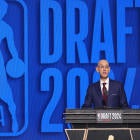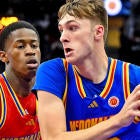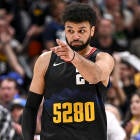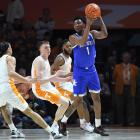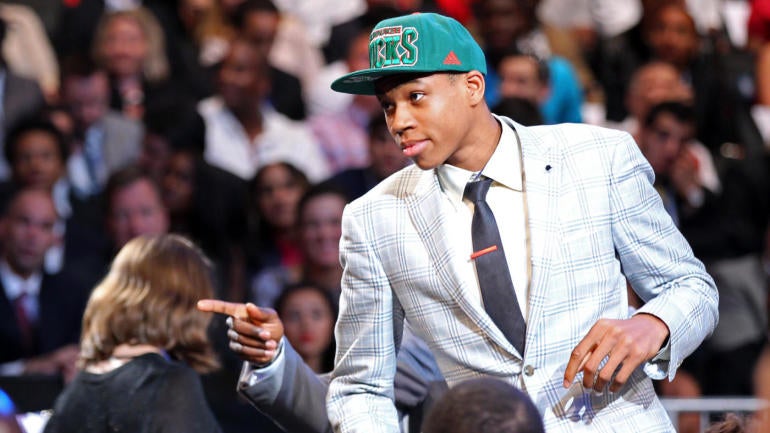
Brewing surprises and week-of excitement have happily clouded the fact that the 2024 NBA Draft, which begins Wednesday, is the worst crop of incoming talent the league has seen since at least 2013.
We've seen it coming for years now: There is no clear No. 1 or glaring star power atop the draft, and now, even the overall depth of the field has diminished after more prospects than ever elected to return to college, thanks in large part to a booming NIL market.
If history is any indication, though, even bad drafts offer hidden value. Sleepers will be found.
This upcoming draft is often compared to 2013, another draft that was billed as a poor one. Anthony Bennett was the top overall pick, and he's gone down as one of the worst in NBA history. The rest of the top five was Victor Oladipo, Otto Porter Jr., Cody Zeller, and Alex Len.
But after several other underwhelming picks, the Milwaukee Bucks changed the direction of their franchise for the next decade when they made Giannis Antetokounmpo the No. 14 overall pick. Later in the first round, the Utah Jazz selected the future four-time Defensive Player of the Year, Rudy Gobert, at 27.
The moral of the story: Even the worst draft of the last decade had some very legitimate star power.
Take a deeper dive into recent draft history and you find that each and every year, there is at least one player drafted who goes on to become an unexpected star. Jimmy Butler was the 30th pick in 2011, Draymond Green was 35th in 2012, Nikola Jokic was 41st in 2014, Devin Booker was 15th in 2015, Pascal Siakam was 27th in 2016, Bam Adebayo was 14th in 2017, Jalen Brunson was 33rd in 2018, and the list continues with each passing year.
When a team successfully finds these sleepers, it can significantly alter the future of their franchise. Of the nine players mentioned above, four have won NBA championships, seven have been to the NBA Finals, and all nine have been to the conference finals.
Why weren't those 'sleepers' drafted higher?
By studying these "steals," we can start to uncover some potential patterns, or at least clues, about why they were undervalued in the draft process.
- Butler was perceived as having good intangibles but little length, athleticism, or shot-making.
- Green was a tweener without a position.
- Gobert was massive with defensive tools, but too limited offensively.
- Antetokounmpo was perceived as an undeniable project, albeit one with a big upside.
- Some analysts thought Jokic "wouldn't survive" in the NBA because of his lack of athleticism.
- Booker had short arms, marginal athleticism, and wasn't considered enough of a shot creator to compensate.
- Siakam was a project who was known as a little wild, albeit with some late-developing talent.
- Adebayo was another tweener who was perceived to lack true center size but also the face-up skill to play the four.
- Jalen Brunson had an undeniable winning pedigree but "limited upside" because of his lack of size and athleticism.
In total, essentially what you find is that each of the nine had at least one glaring concern – whether it was a lack of athleticism, skill, or an obvious conventional position.
There were physical concerns about Jokic, Booker, and Brunson. Offensive concerns about Butler, Antetokounmpo, and Siakam. Positional concerns about Green and Adebayo.
The irony is that the vast majority of those concerns, if not all of them, were rational and justifiable as they were approaching the draft.
What allowed them to overachieve?
If the concerns were valid and yet these players still became stars, what does that tell us? Did their liabilities eventually develop into assets? In some cases, you could make that argument; Jimmy Butler is clearly a more dynamic scorer than anyone could have imagined and Devin Booker has blossomed into an elite shot creator.
Much more common, though, is that while those liabilities were appropriately identified, the weight of those liabilities' overall impact was overestimated. Or said another way, scouts worried too much about what they couldn't do, and not enough about what they could do.
- Jokic is still a limited athlete, but because his offensive skill set and mind for the game is so elite, he dominates regardless.
- Antetokounmpo still isn't a good shooter, but he's one of the more elite physical specimens in the game with a motor to match, so he dominates regardless.
- Green still doesn't fit into a conventional position, but his defensive versatility, passing acumen, and competitiveness allow him to impact the game in unprecedented ways regardless.
You could cite a similar example with every player on the list. The concerns were valid leading up to the draft, but what's led to their stardom is that they are elite in at least one other game-changing area, regardless of the other liabilities in their game.
And being an elite competitor is just as important as being an elite defender, physical presence, or offensive player. In fact, that variable in particular may be the most consistent one among this group, with Butler, Antetokounmpo, Green, and Brunson all among the very best the league has to offer in that area.
What that means for the 2024 NBA Draft
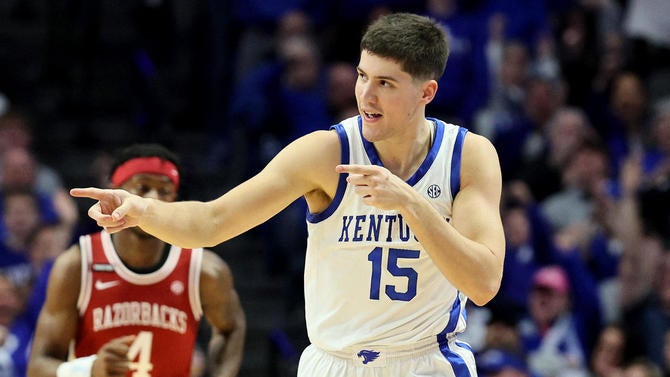
If we are to use this history to educate our perspective on this year's draft, we can deduce three key takeaways:
- While it is perceived as a weak draft, there are likely future All-Stars somewhere in the field.
- Those diamond-in-the-rough type prospects are not going to be void of major concerns. Just the opposite: They may be currently undervalued because of a glaring concern and simultaneously have elite potential in another key area.
- Being an elite competitor is every bit as valuable as being an elite defender, physical presence, or offensive player.
So, who are the prospects who are elite in specific areas, even if they have glaring deficiencies in others?
The competitors are the likes of Ron Holland, Tidjane Salaun, Devin Carter, and, farther back, Jamal Shead. On top of that, Salaun has one of the most impressive physiques in the field, and Carter has tested as one of the best athletes.
There's an overlap of competitiveness and defensive impact, but some of the other names to consider among potential defensive standouts include Alex Sarr, Donovan Clingan, Stephon Castle, and Ryan Dunn.
Some players with glaring offensive skill sets and minds for the game, even if they have physical limitations (perceived or not), include the likes of Reed Sheppard, Rob Dillingham, Tyler Kolek, and (my second-round sleeper) Izan Almansa.
Is that to say all of these players have star potential? Of course not. But it shows they have enough in common with recent NBA stars that they deserve some additional consideration.
While no stars have yet to reveal themselves for this year's draft, history is telling us they're hiding somewhere in plain sight.









